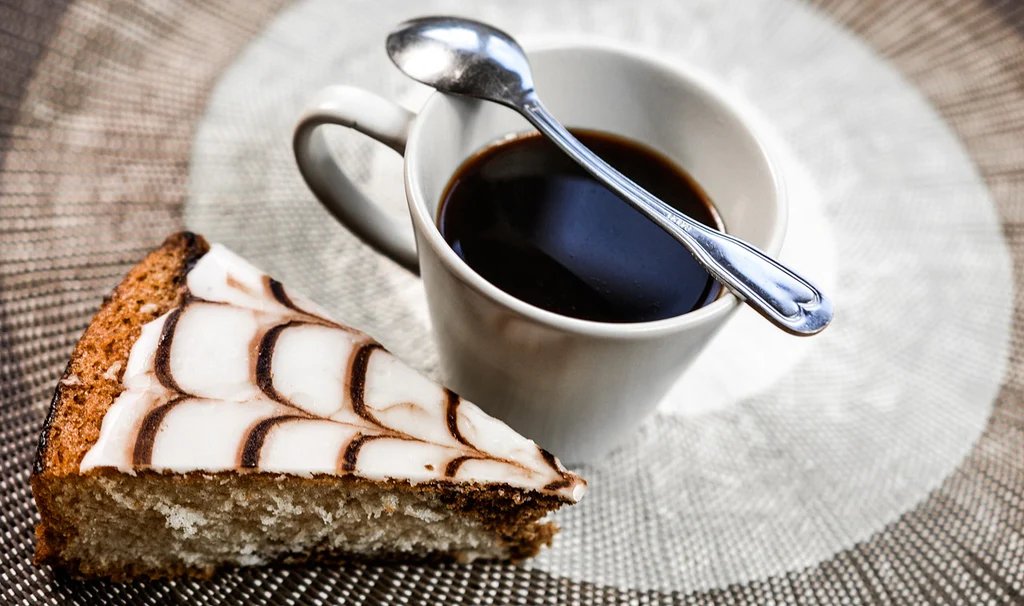Pairing pastries with coffee or tea is a delightful way to enhance both the flavors of the drink and the pastry. The right combination can elevate your experience, creating a perfect balance of tastes and aromas. However, not every pastry works well with every type of coffee or tea. Understanding how different flavors complement each other will help you make the best choices for your next coffee break or afternoon tea.

1. Pairing Coffee with Pastries
Coffee, with its bold and rich flavor, works wonderfully with pastries that can balance its intensity. The roast of the coffee and the sweetness or richness of the pastry can either complement or contrast each other for a more enjoyable experience.
Light Roasts and Sweet Pastries
If you prefer a lighter roast, such as a light or medium brew, choose pastries that are delicate in flavor and texture. Fresh fruit tarts, danishes, or scones with a mild glaze work well because their fruity or slightly tangy sweetness won’t overwhelm the coffee’s subtle notes. The light roast’s bright acidity pairs beautifully with these fruity pastries, creating a refreshing contrast.
Dark Roasts and Rich Pastries
For a rich, dark roast, such as French or espresso-style coffee, opt for pastries with deeper flavors, such as chocolate croissants, almond pastries, or a rich brioche. The robust flavor of dark coffee complements the deep, satisfying sweetness of these pastries. Dark coffee can stand up to the richness of the pastry, creating a balanced and harmonious match. Additionally, the slightly bitter taste of the coffee contrasts nicely with the sweet filling of a chocolate or almond pastry.
Flavored Coffees and Spiced Pastries
Flavored coffees like vanilla, caramel, or hazelnut pair excellently with pastries that have similar spices or flavors. Consider cinnamon rolls, caramel eclairs, or nut-filled pastries. The sweet, spiced notes in both the coffee and the pastry will blend seamlessly, enhancing each other’s flavor profiles. For example, a hazelnut coffee will perfectly complement a pastry filled with hazelnut cream or praline.
2. Pairing Tea with Pastries
Tea offers a variety of flavors, from floral and light to strong and earthy. The right pastry pairing can highlight the distinct flavors of the tea while adding a sweet or savory element to the experience.
Black Tea and Fruity or Nutty Pastries
Black tea, such as Darjeeling, Earl Grey, or Assam, has a strong, bold flavor that pairs well with pastries that have either fruity or nutty components. A fruit tart, lemon pound cake, or nut-filled Danish are all excellent choices. The fruitiness of a tart or the richness of a nut-based pastry complements the strength of black tea, balancing the flavor with its natural sweetness or slight bitterness.
Green Tea and Light, Delicate Pastries
Green tea, with its delicate and often grassy flavor, pairs best with lighter, less sweet pastries. A light green tea like Sencha or matcha goes well with a simple vanilla biscuit, shortbread, or even a plain scone. The mild flavor of green tea won’t overpower the subtle sweetness of these pastries, allowing both the tea and pastry flavors to shine through. Additionally, matcha-flavored treats, such as matcha cakes or cookies, will match beautifully with the grassy notes of green tea.
Herbal Tea and Spiced or Savory Pastries
Herbal teas, such as chamomile, peppermint, or rooibos, offer a range of flavors that can be paired with savory or spiced pastries. Consider pairing chamomile tea with a honey or almond pastry, or peppermint tea with a pastry that has a hint of chocolate. The light floral or minty flavor of herbal teas complements savory or spiced pastries, making for a balanced, comforting experience. A savory pastry like a spinach and feta croissant pairs excellently with a cup of rooibos tea, as the herbal tea’s earthy notes enhance the richness of the pastry.
3. Tips for Perfect Pairing
When choosing the right pastry for your coffee or tea, keep a few general tips in mind:
- Balance flavors: Aim for a balance between the pastry’s sweetness and the coffee or tea’s strength. Stronger brews like dark coffee or bold black tea can stand up to sweeter or richer pastries, while lighter brews pair best with more delicate pastries.
- Experiment: Don’t be afraid to experiment with different pairings. Some combinations may surprise you, offering new and exciting flavor experiences.
- Texture matters: Consider the texture of the pastry as well. A flaky croissant pairs well with coffee, while a dense, creamy pastry might go better with a lighter tea.
Conclusion
Pairing pastries with coffee or tea can be a fun and rewarding experience that enhances both the flavor of the drink and the pastry. By understanding the characteristics of your coffee or tea and matching it with the right pastry, you can create a balanced, harmonious experience that satisfies all your senses. Whether you’re enjoying a light roast with a fruit tart or a strong dark coffee with a rich chocolate croissant, the perfect pairing can transform your meal into a delightful culinary experience.

